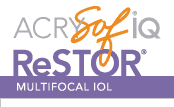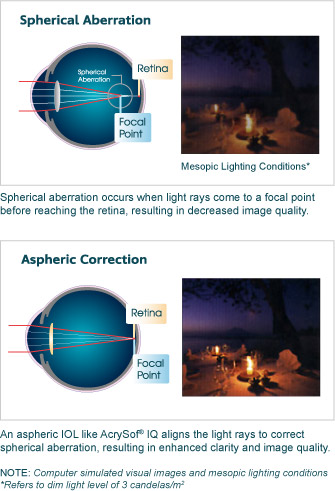
If you want to experience all life has to offer - you want to see it all, from the big expansive picture, down to the smallest, most precious details...

Good news comes with the innovative AcrySof® ReSTOR® cataract replacement lens...
What follows is an explanation of what a cataract is...
Cataract surgery with the AcrySof® ReSTOR® lens means you won't have new eyes, but you will have restored sight.
A cataract is a clouding of the natural lens inside your eye...
A cataract can be the reason sharp images become blurred...
Presbyopia is the condition in which the lens of the eye loses its ability to focus...
One of the safest and most successful procedures performed today.
Huge medical advances have been made in the treatment of cataracts...
Most patients typically return home the very same day...
An intraocular lens (IOL) is the replacement lens that is surgically implanted...
The AcrySof® ReSTOR® lens is a breakthrough lens for cataract surgery...
Most AcrySof® ReSTOR® lens patients find that they can read a book, work on the computer...
The AcrySof® ReSTOR® lens is an advanced type of multi-focal IOL...
If you're considering cataract surgery, you'll be happy to know that Medicare covers the cost...
When your sight is compromised, your life is compromised...
To get the big picture, get the details first. Important questions to ask your eye doctor:

Current technology makes it possible to correct the cataracts that may be clouding your vision...

Sometimes, the surface of the cornea is curved in such a way that vision becomes distorted...
The AcrySof® Toric intraocular lens (IOL) replaces your eye's natural clouded lens during cataract surgery...

As we age, the eye's natural crystalline lens often stiffens and hardens...
Crystalens replacement lenses don't just treat your cataracts...
Your physician will perform a thorough eye exam to determine the most appropriate treatment...
Potential Complications
Implantation of Crystalens is a surgical procedure. All surgical procedures entail some risk...
Indications For Use
The Crystalens is intended for primary implantation in the capsular bag...